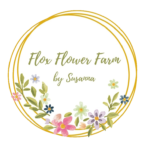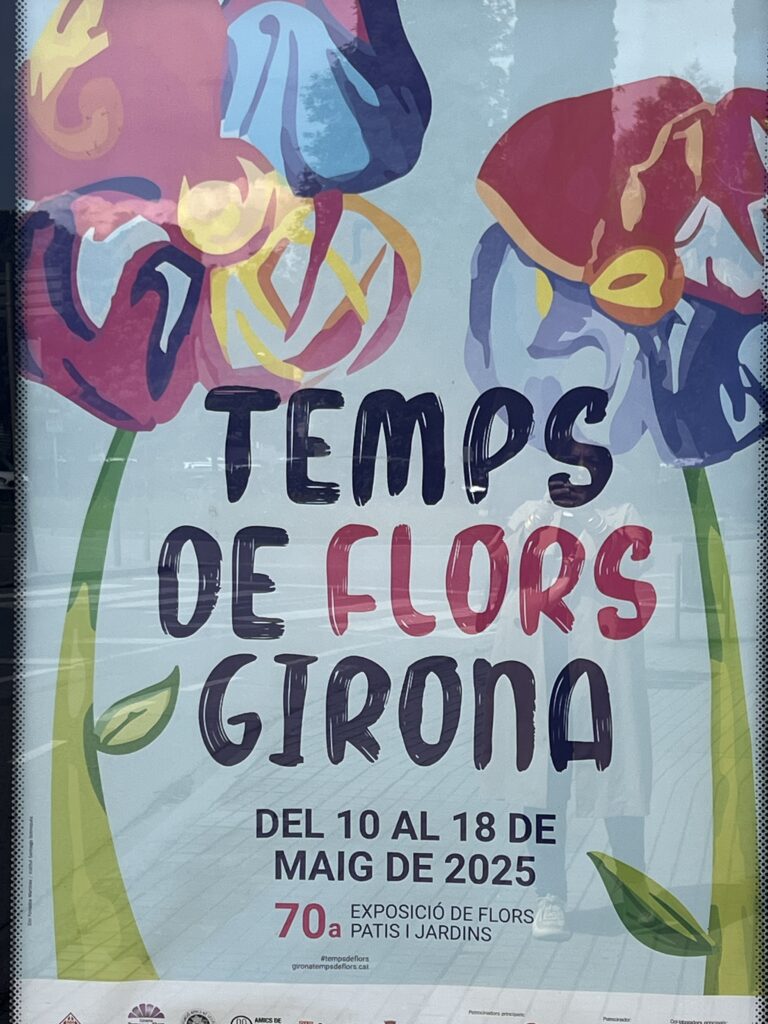
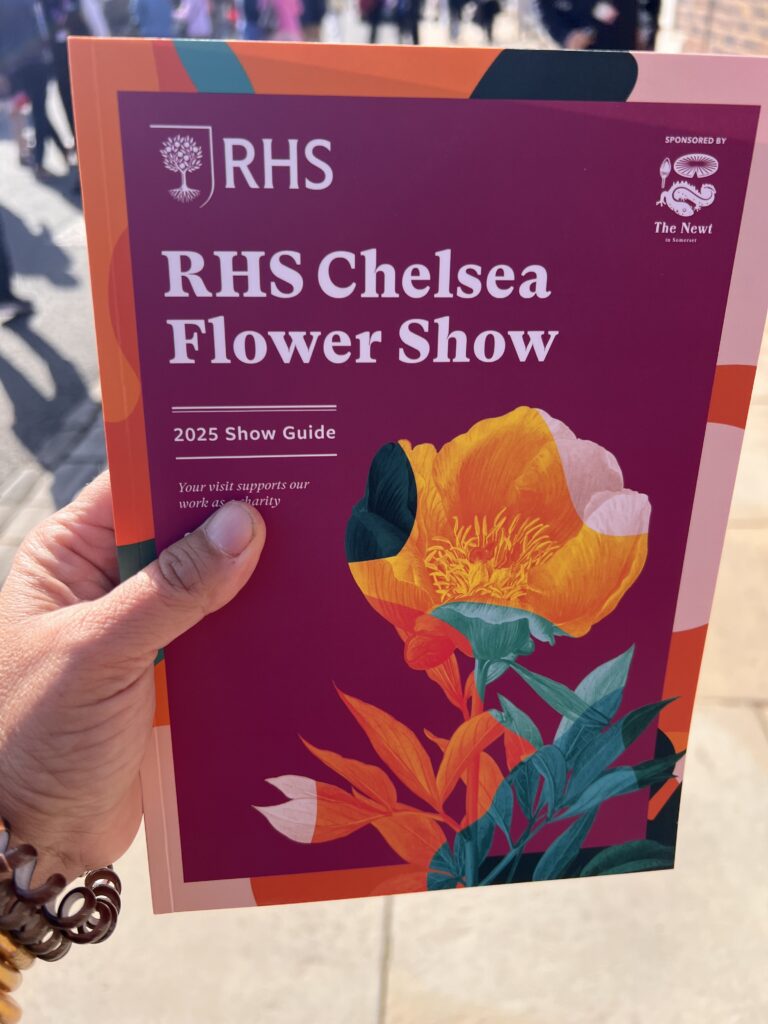
This past May was intense and inspiring, and one of the most enriching experiences was visiting the Chelsea Flower Show. Another event I was excited to finally experience was Girona Temps de Flors. I had never been before, and this year we managed to sneak in a short getaway.
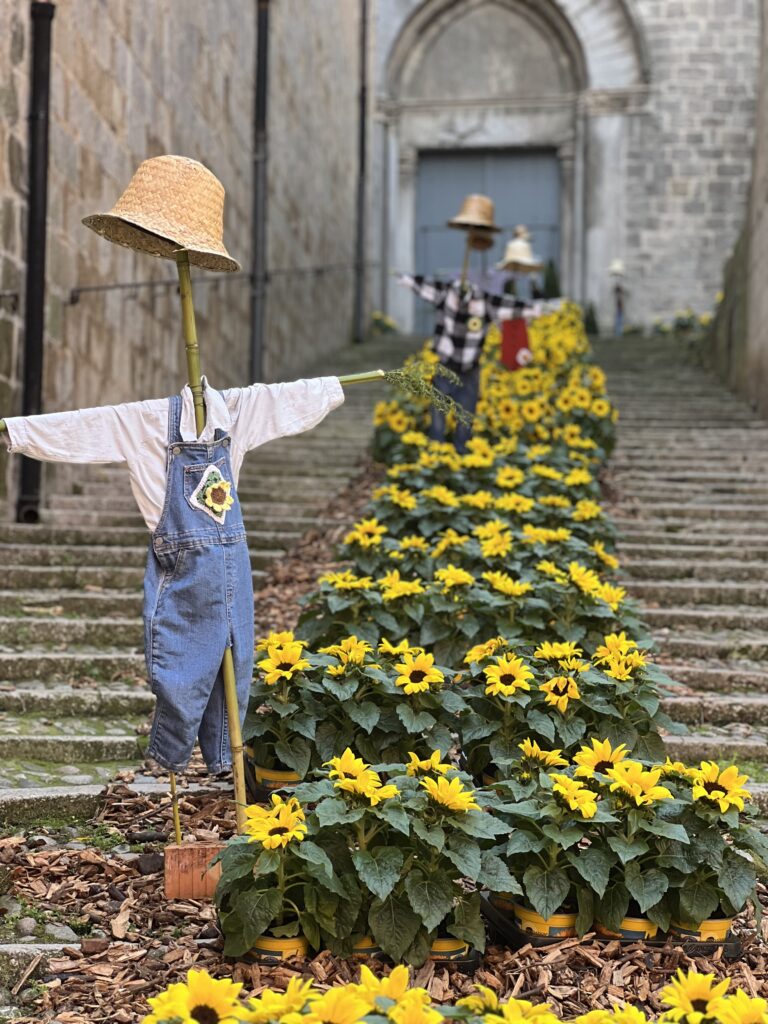
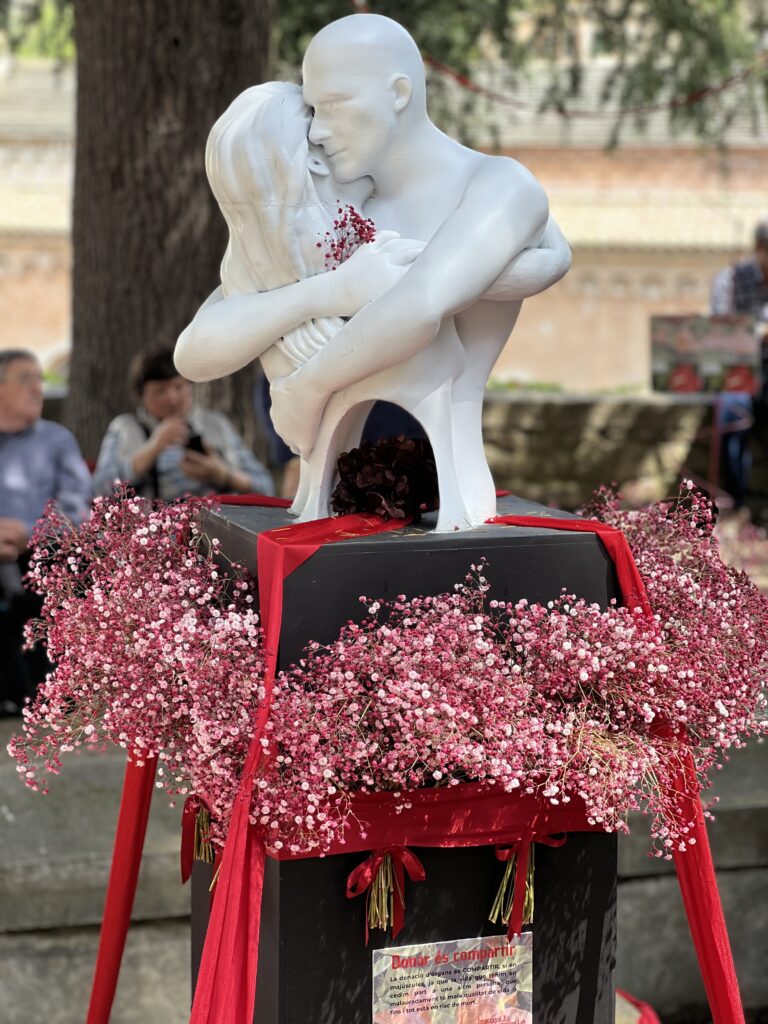
I must admit, I imagined it a bit differently. Some installations felt too themed, maybe even a little forced. But others truly delighted me — surprising color combinations, original forms, and even a floral maze that made me smile (of course, we had to walk through it!). What I appreciated the most wasn’t the design or even the flowers, but the backstage side of things — the mechanics behind the installations. And guess what? I didn’t see any floral foam (“mossy”)! Finally! It’s been years since many places stopped using it because of its environmental impact, yet we still see it too often. So hats off to Girona Temps de Flors for skipping it this year — long overdue!

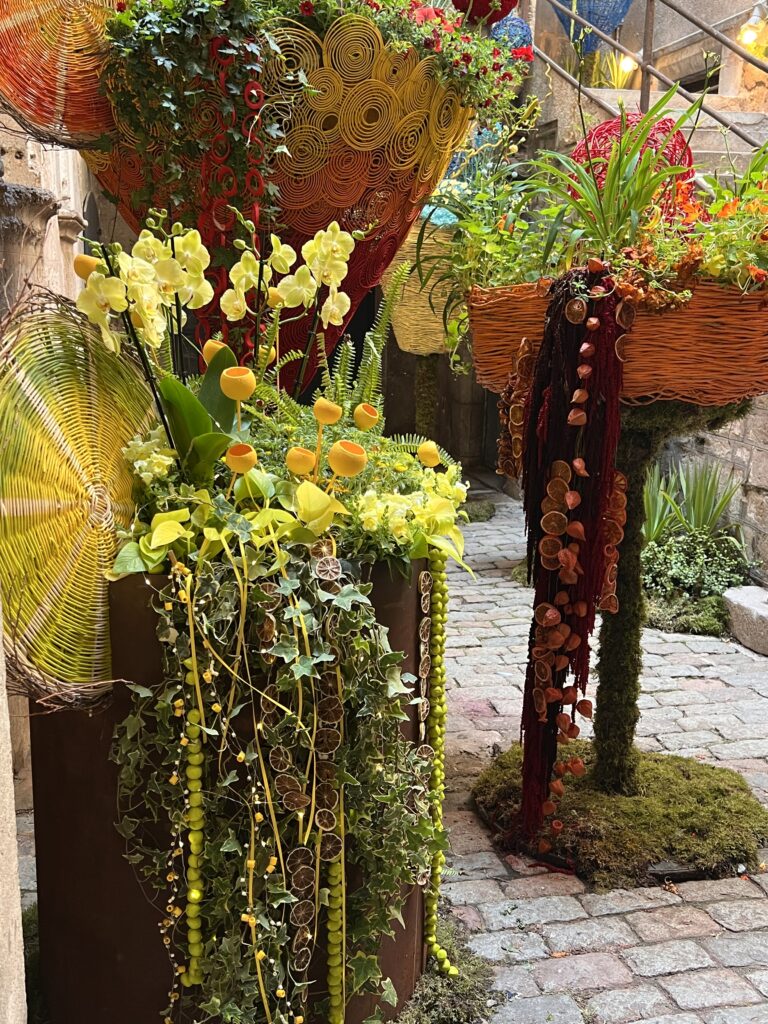
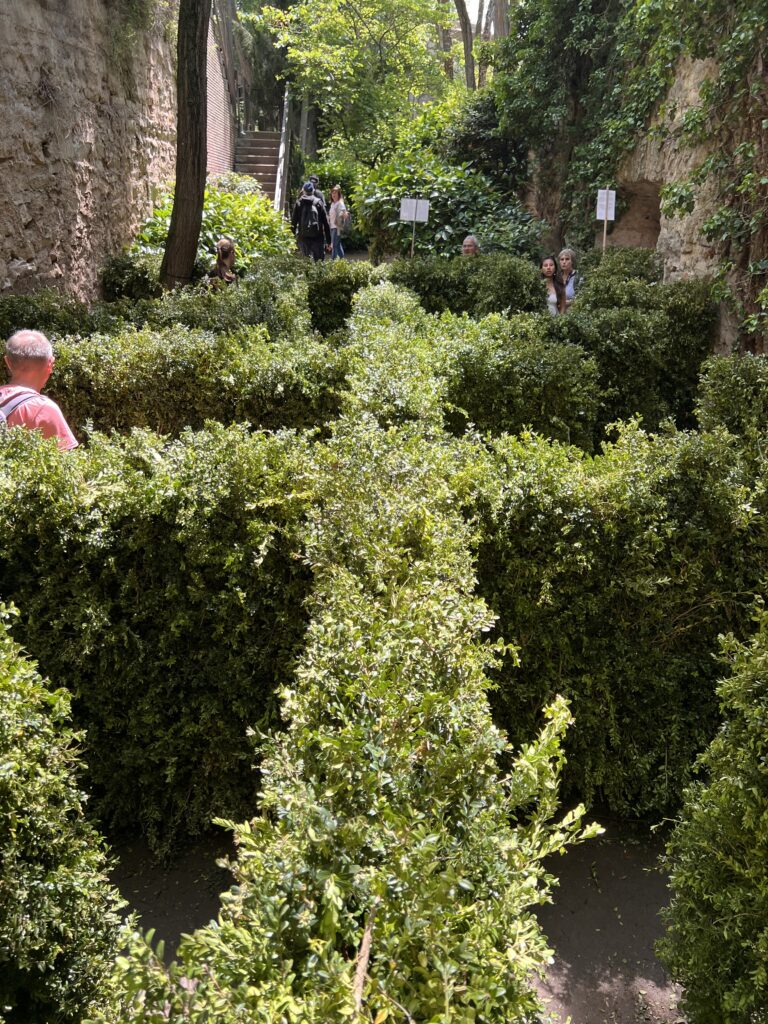
Another thing I loved was seeing the city so beautifully decorated with flowers — mainly fresh and dried ones. There were a few artificial flowers, but very few, and they were well integrated. Strolling through the streets and seeing Girona dressed in blooms is a real pleasure. What captured me the most, though, were the green areas and urban gardens — they were stunning. I suppose they were specially prepared for the event, but I’m already planning to go back and see if they’re kept in the same condition.
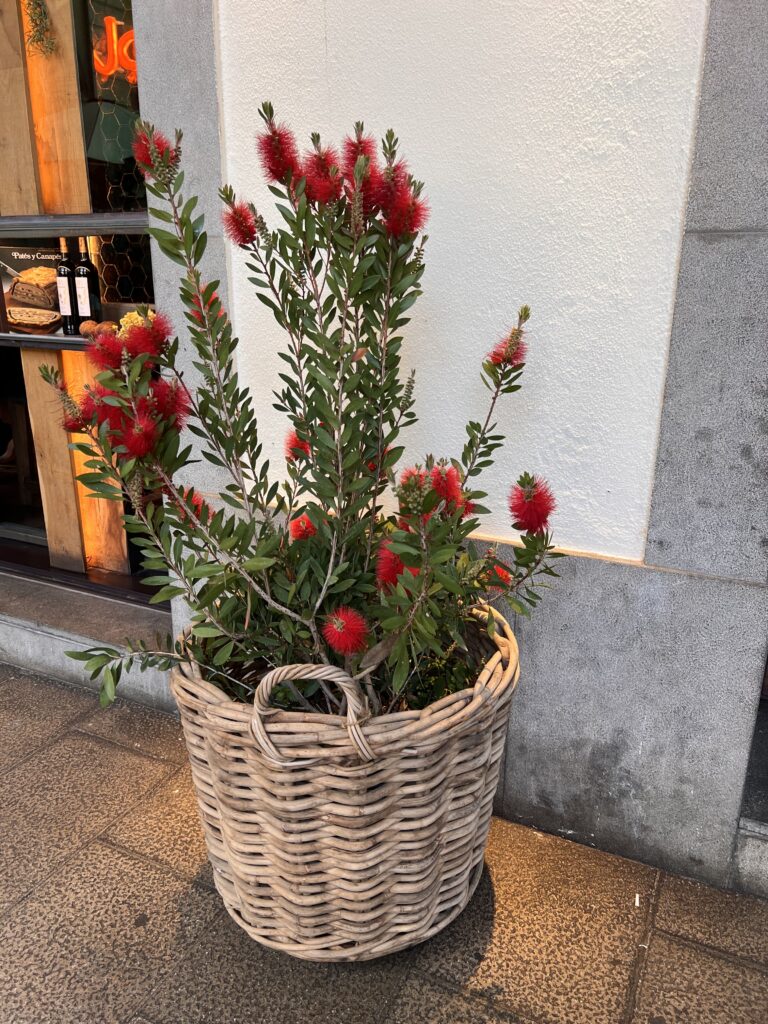
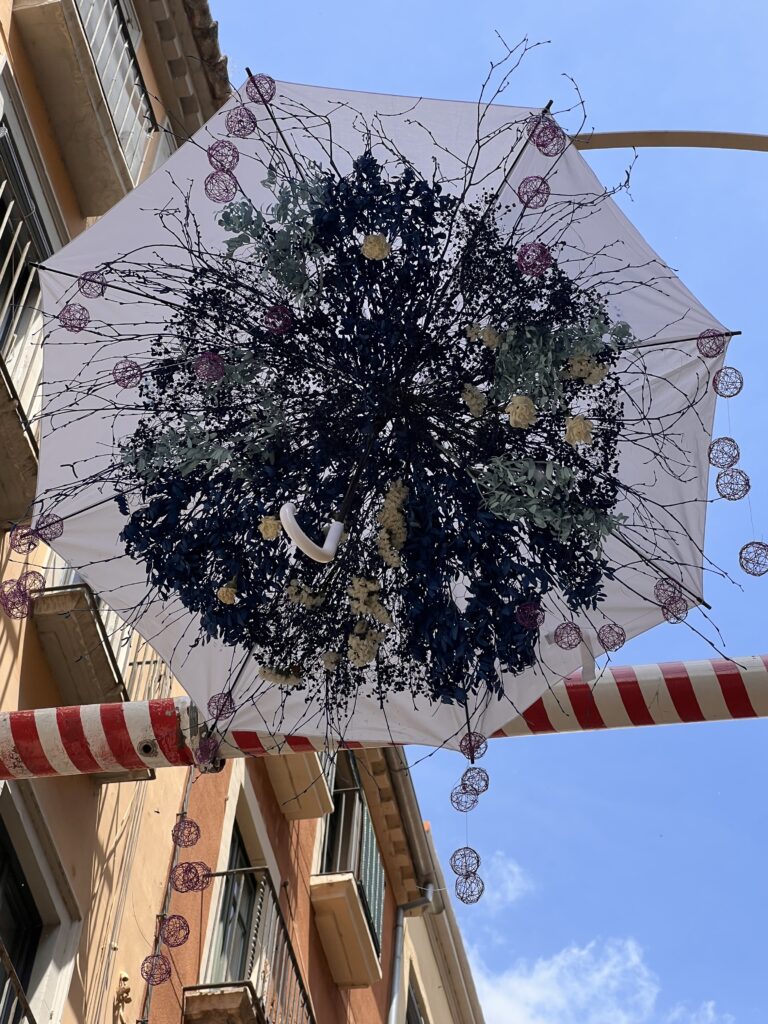
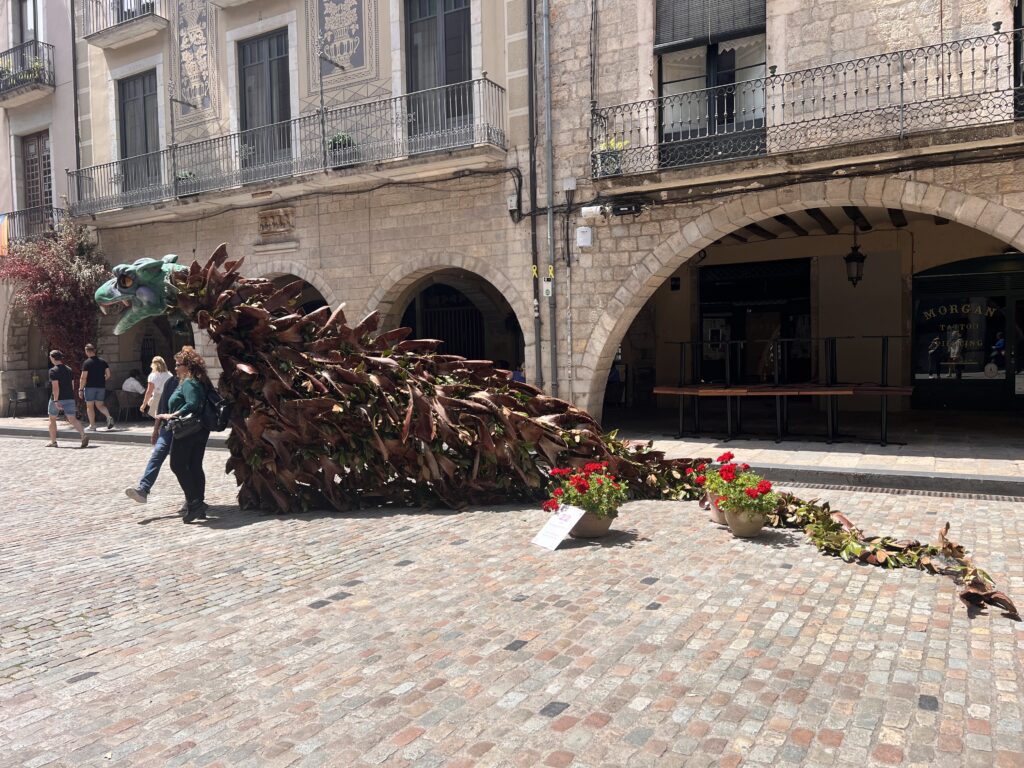
In short, a brief trip, but full of ideas, sensations, and a strong desire to bring some of that inspiration into practice.
7 things we learned at the Chelsea Flower Show 2025 🌸
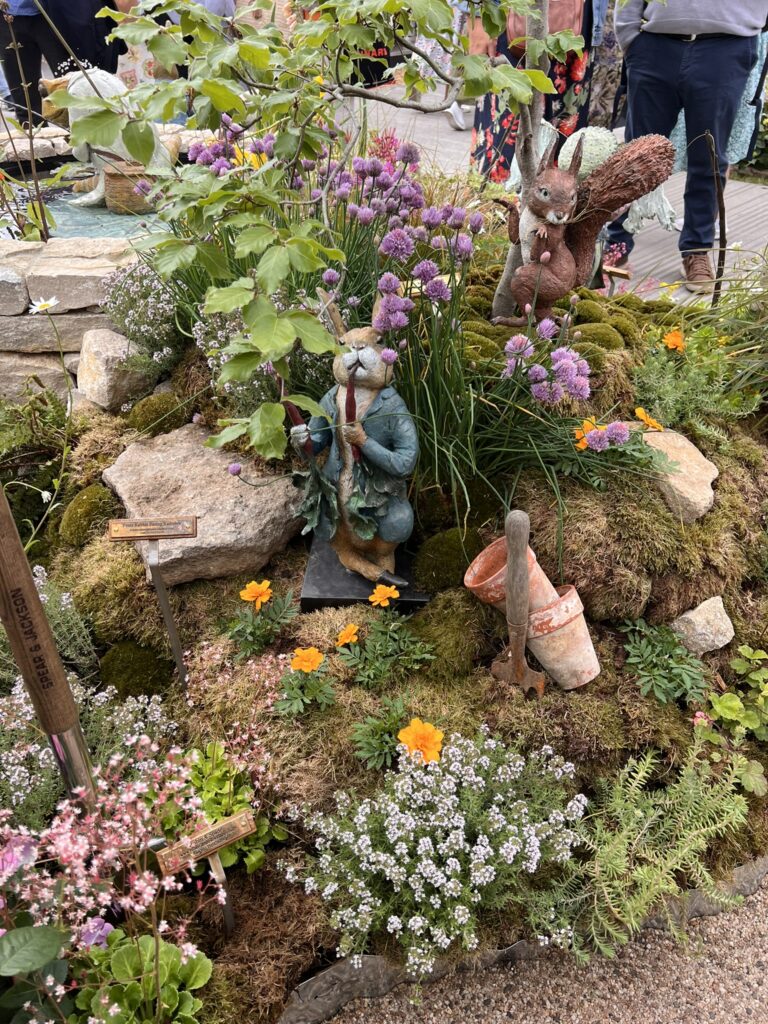
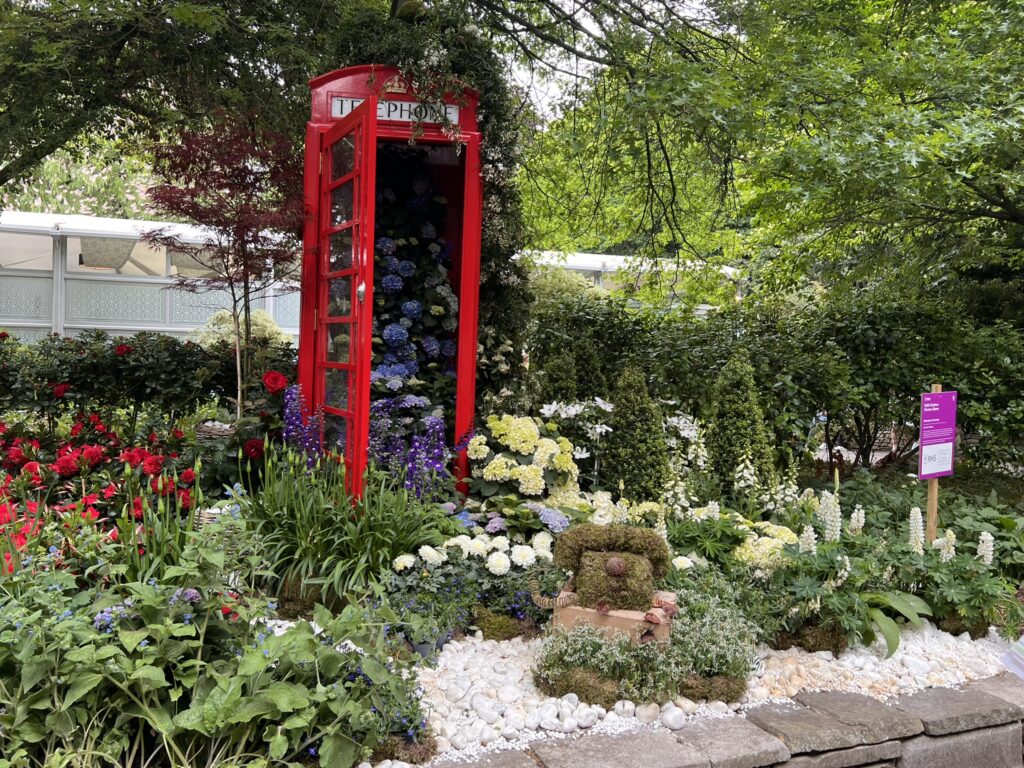
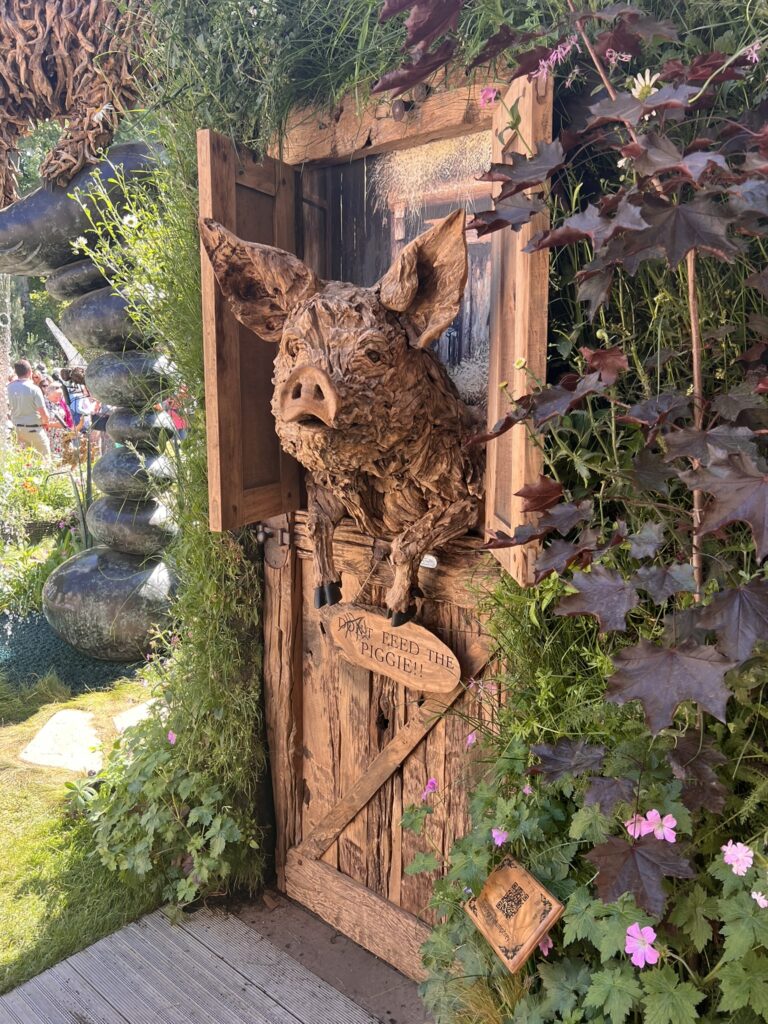
I’d been wanting to go to Chelsea for years, but the timing was always tricky — with farm work peaking around that time, and trying to coordinate with family life. But this year we joined forces, and as always happens when we do that in our home, we made it work. And it was absolutely worth it. To see, smell, touch, and walk through spaces where every detail is carefully designed, where flowers tell stories, and where new ideas challenge your perspective.
To be honest, it was a bit overwhelming at first. So much beauty, so many ideas and so much creativity — it gave me that moment of panic where I just couldn’t process it all. Luckily, Ayla was with me, and she helped me breathe, slow down, and finally take it all in at a gentler pace.
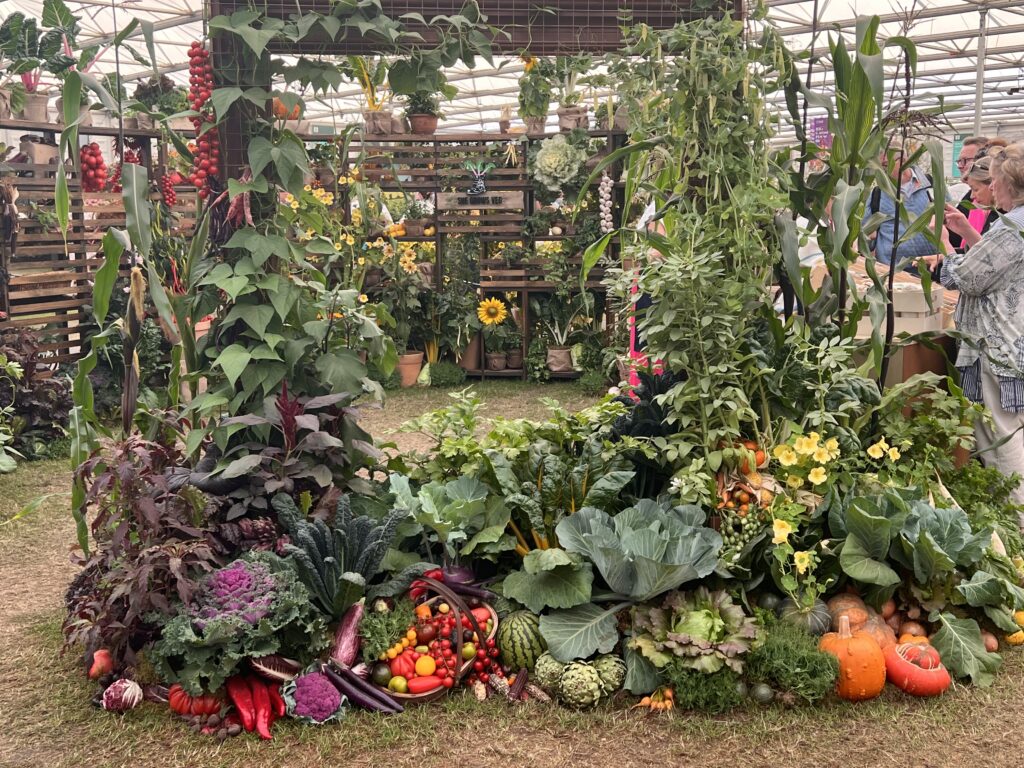

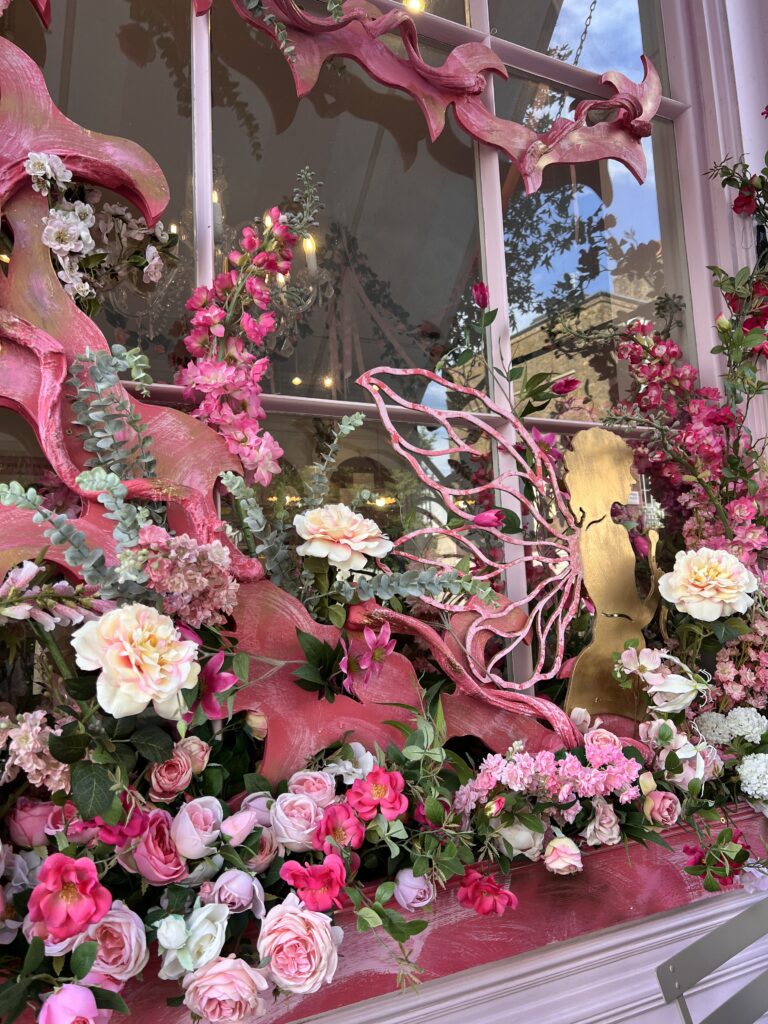
The weather was kind to us too. The Chelsea Flower Show is a very British event — there’s a dress code, “suggestions” on what to wear (and not wear)… As you can imagine, Ayla and “lady-like” fashion go hand in hand, so that was both elegant and fun. They even recommend hats instead of umbrellas if it rains — but we had sunshine all the way. A bit chilly (spring inspiration doesn’t really go with coats), but nothing a good pashmina couldn’t fix!
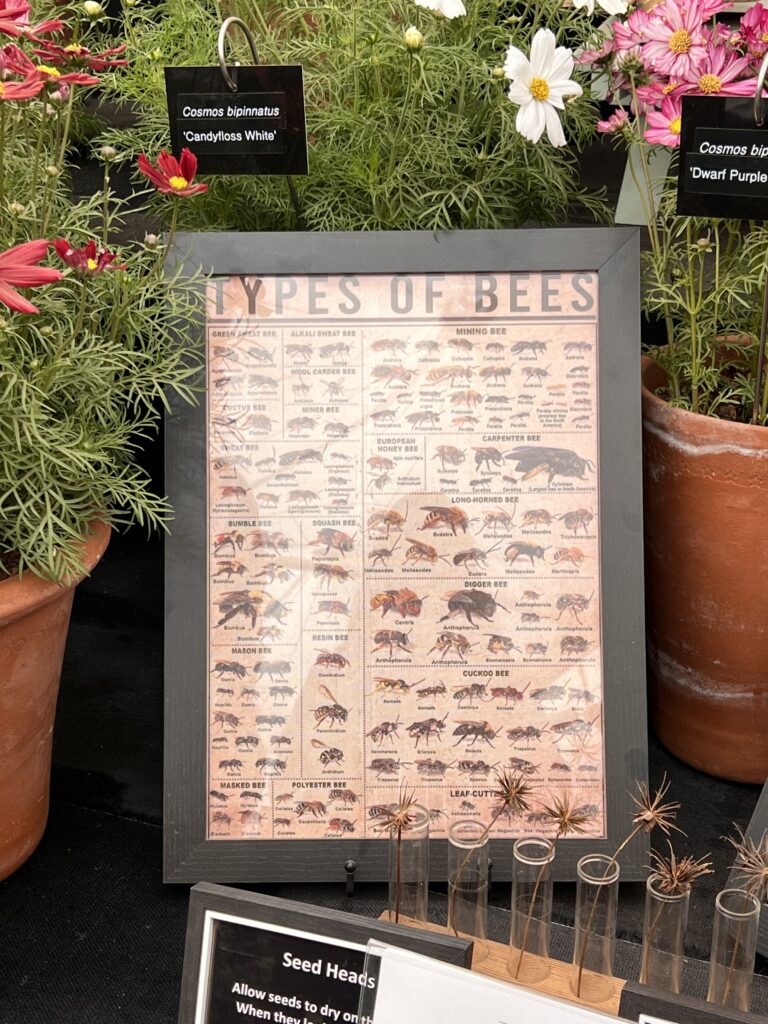
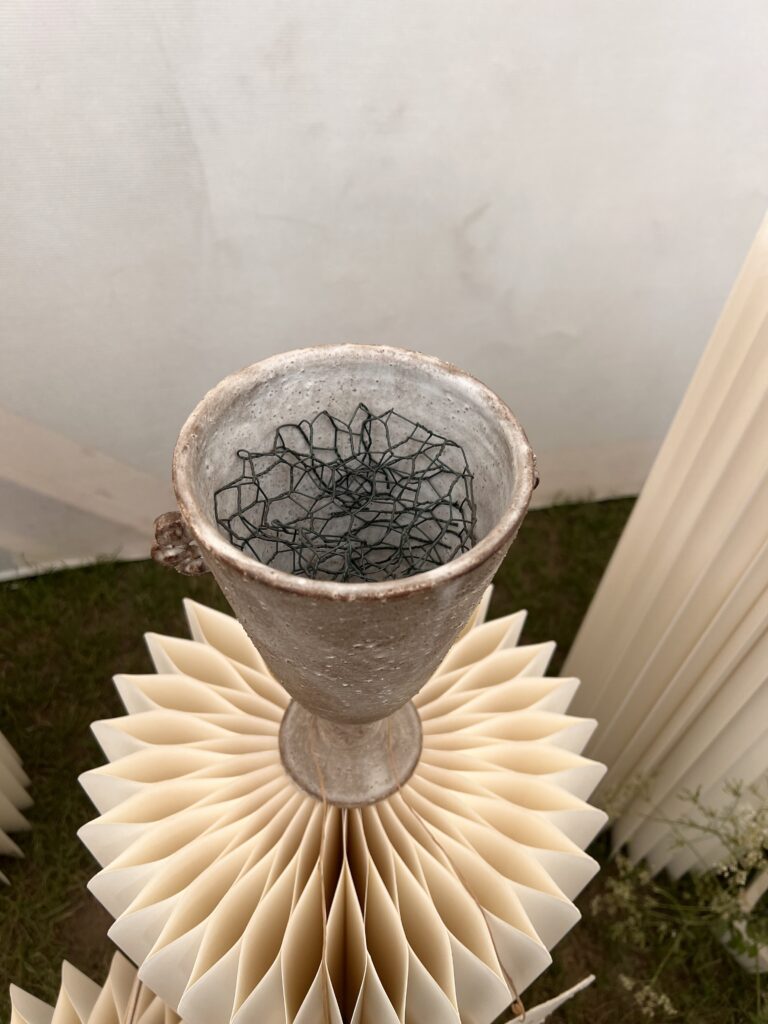

Here’s a short summary of the 7 garden trends and ideas that stood out to us the most — many of which are still swirling in my mind as I reflect and begin to bring them into practice.
1. Gardens with a purpose — gardens to live in
Our favorite garden was Monty Don’s — a space designed for dogs to enjoy, but also reminding us that a garden is meant to be lived in. Meandering paths made of antique bricks, sweet little details like the names of the dogs who use the space, tall but manicured grass — a nod to the “no-mow May” movement to support insects and small wildlife. There was a water feature using recycled water, which looped around to create a refreshing sound and visual atmosphere. Tall trees, wildflowers, and warm velvety colors all centered on pollinators — but with that cozy cottage garden feel that invites you to appreciate the beauty around you. A garden not to be admired from afar, but one to be celebrated and enjoyed.
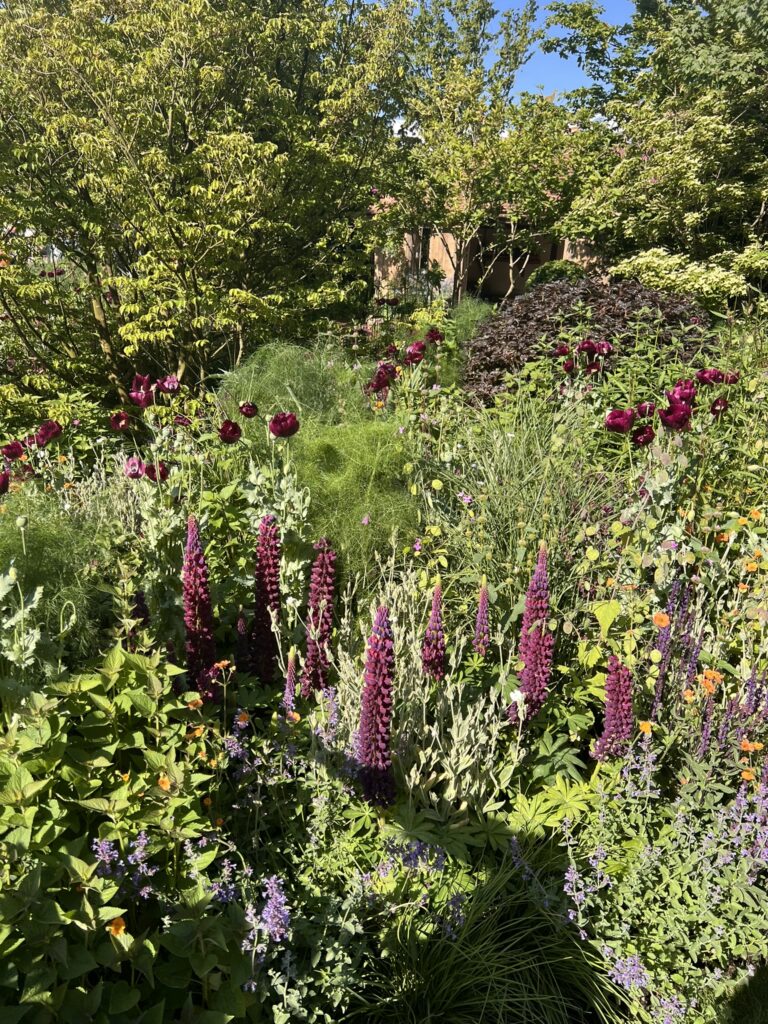
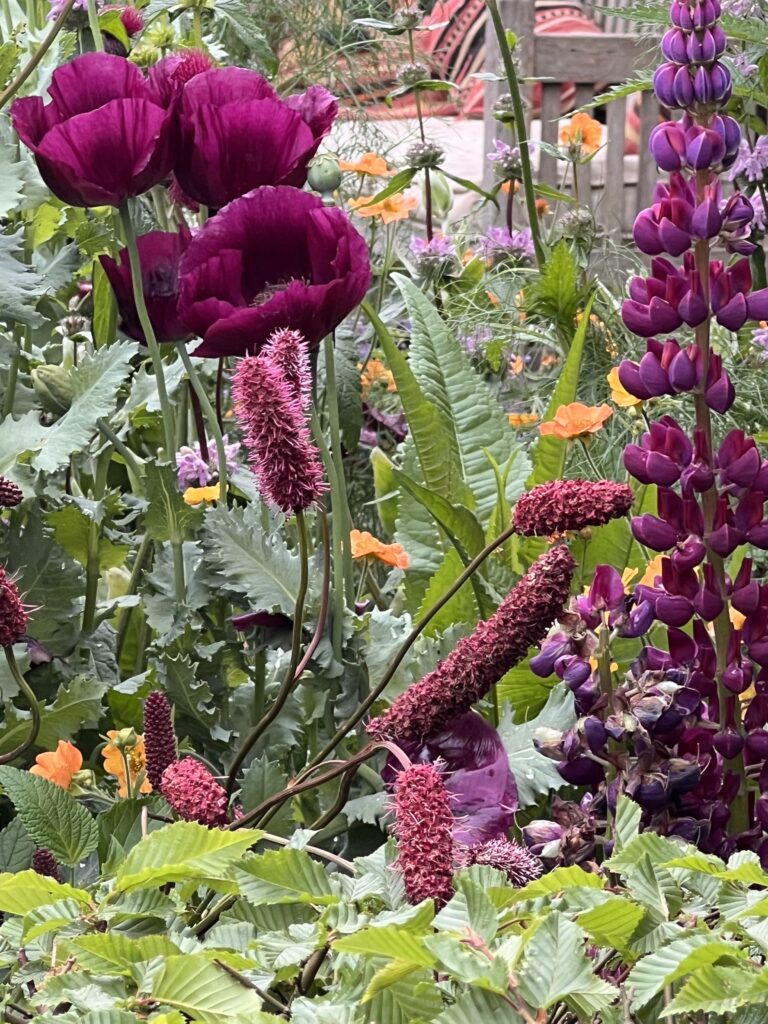
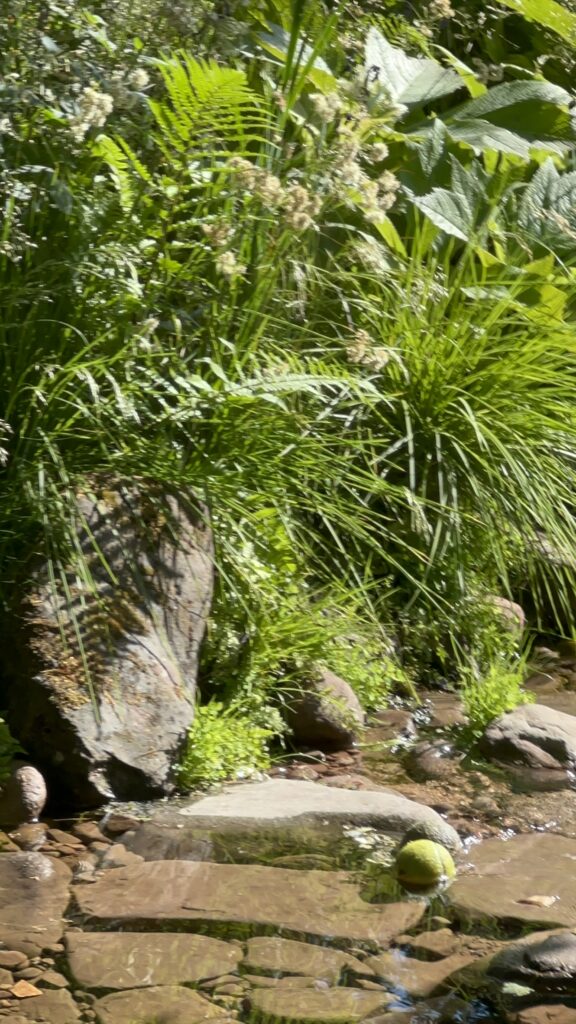
2. Wildflowers and cottage gardens still reign
The cottage garden aesthetic will always win me over — a traditional, slightly unruly but utterly charming style that originated in English rural areas. It mixes flowers, herbs, and edibles with casual beauty. Think: English roses, delphiniums, peonies, irises, foxgloves, daisies, cosmos, poppies… blooms that not only enchant but also attract bees, butterflies, and birds. They’re often paired with aromatic or edible plants like lavender, rosemary, onions or cabbages, and even small fruit trees — all contributing to rich biodiversity.
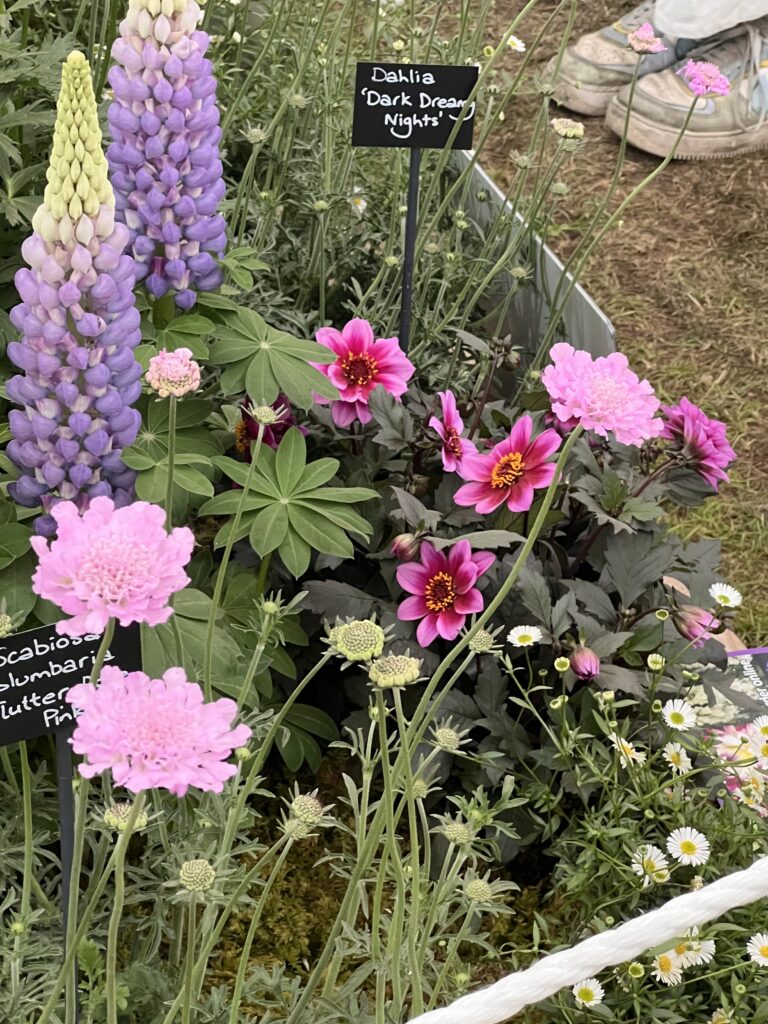

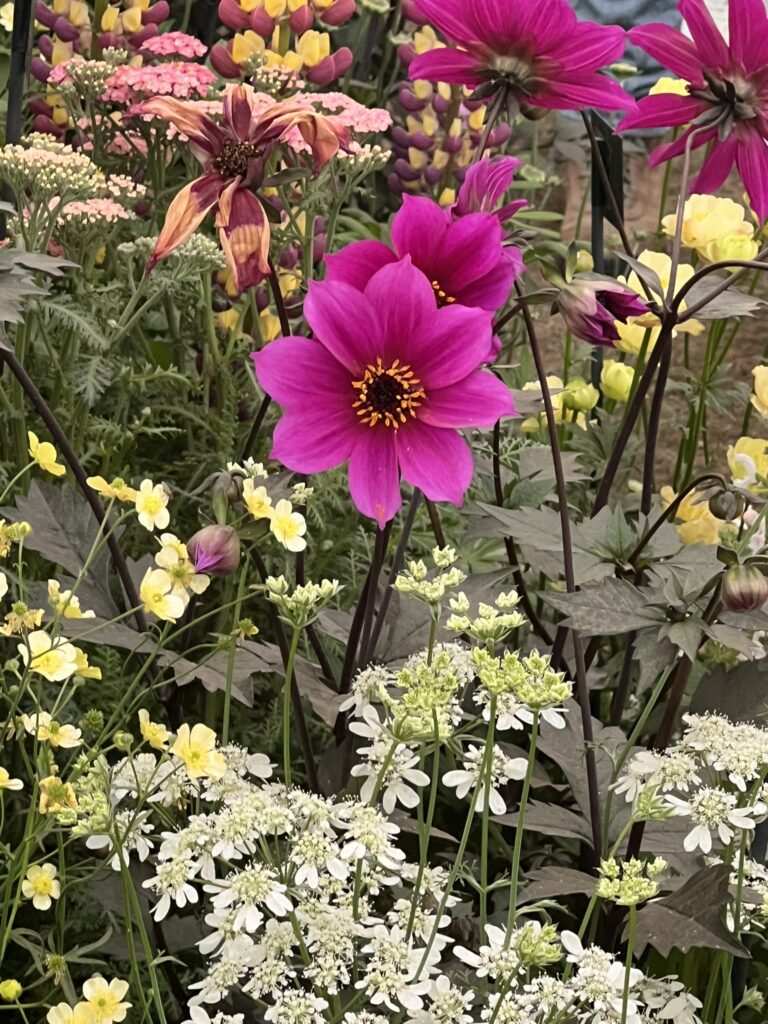
3. Fearless color
Color in English gardens feels natural, emotional, and balanced. Rather than rigid color schemes, the design relies on evoking sensations: calm, elegance, nostalgia, and abundance. Soft romantic palettes of pinks, lavenders, whites, and sky blues dominate, often with gentle light contrasts rather than harsh saturation. Bold touches like ruby reds, creamy yellows, or deep purples are added for visual rhythm, grounded by the many shades of green. These gardens are often planted for seasonal succession, ensuring something is always blooming.
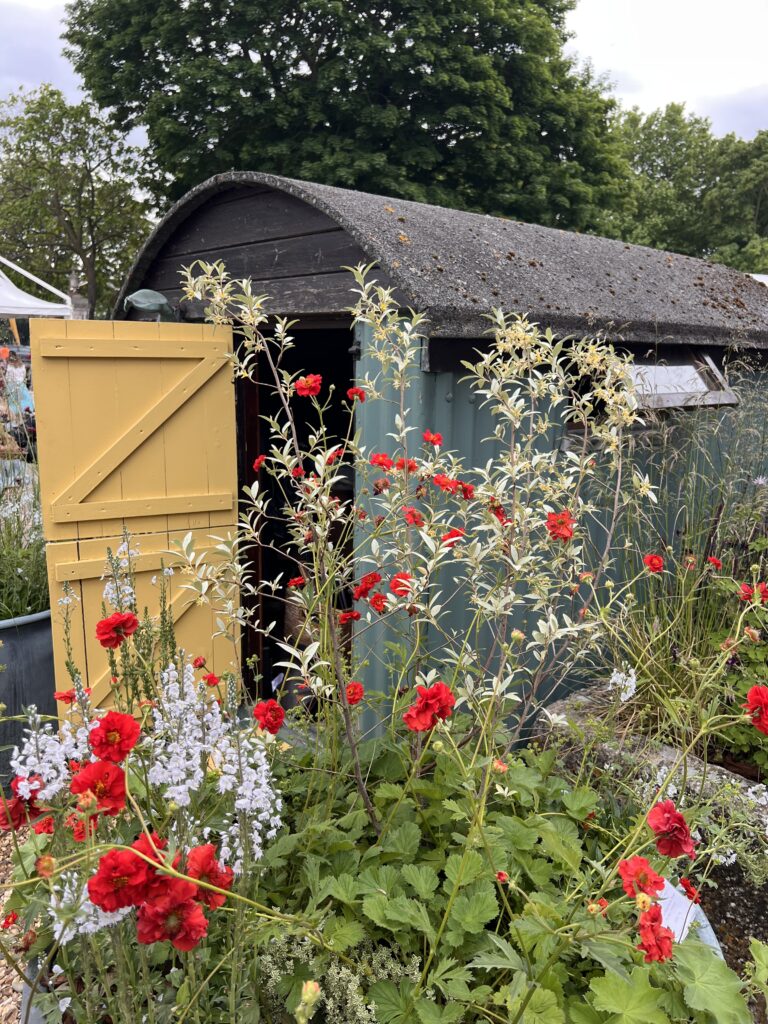
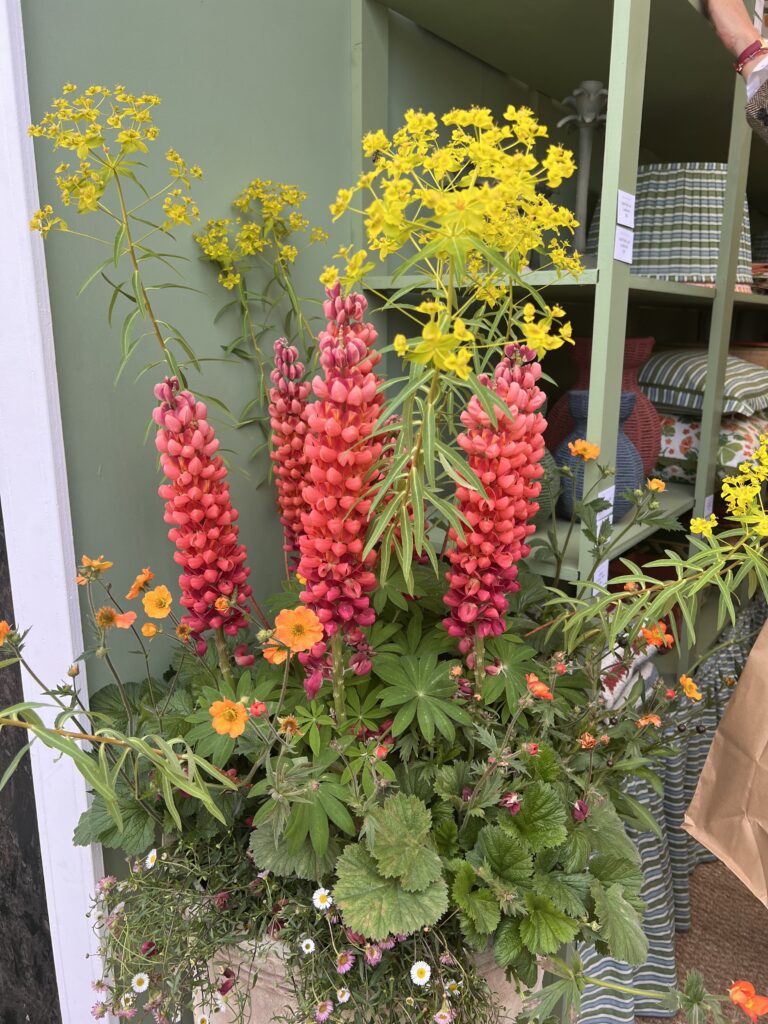
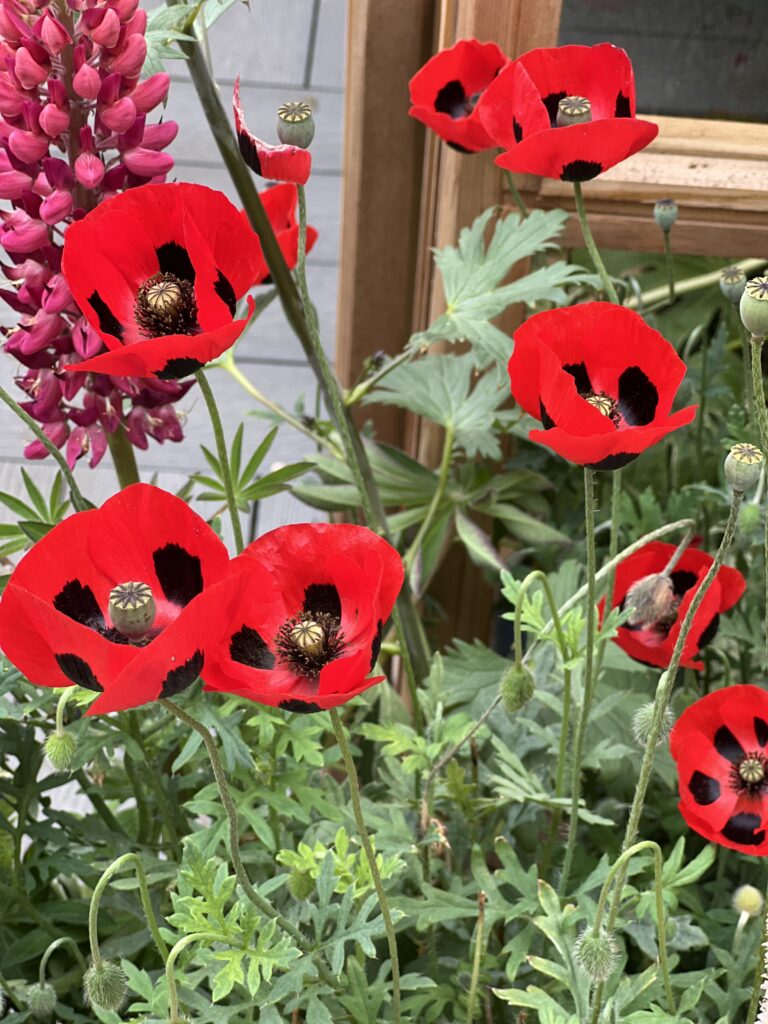
4. Oversized pots and dramatic planting
No matter if you’ve got a large garden or just a window ledge, this trend applies the “more is more” concept in the best way. Large pots in small patios are a strong English gardening trend, offering visual impact and low maintenance — ideal for urban spaces or time-crunched gardeners.
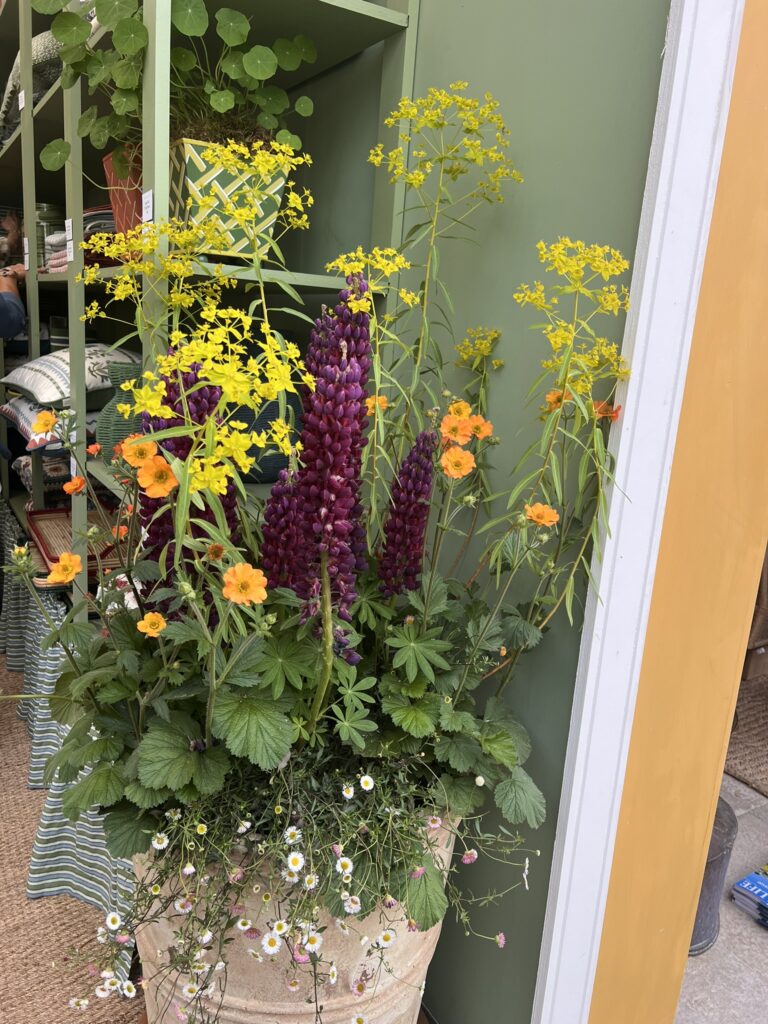
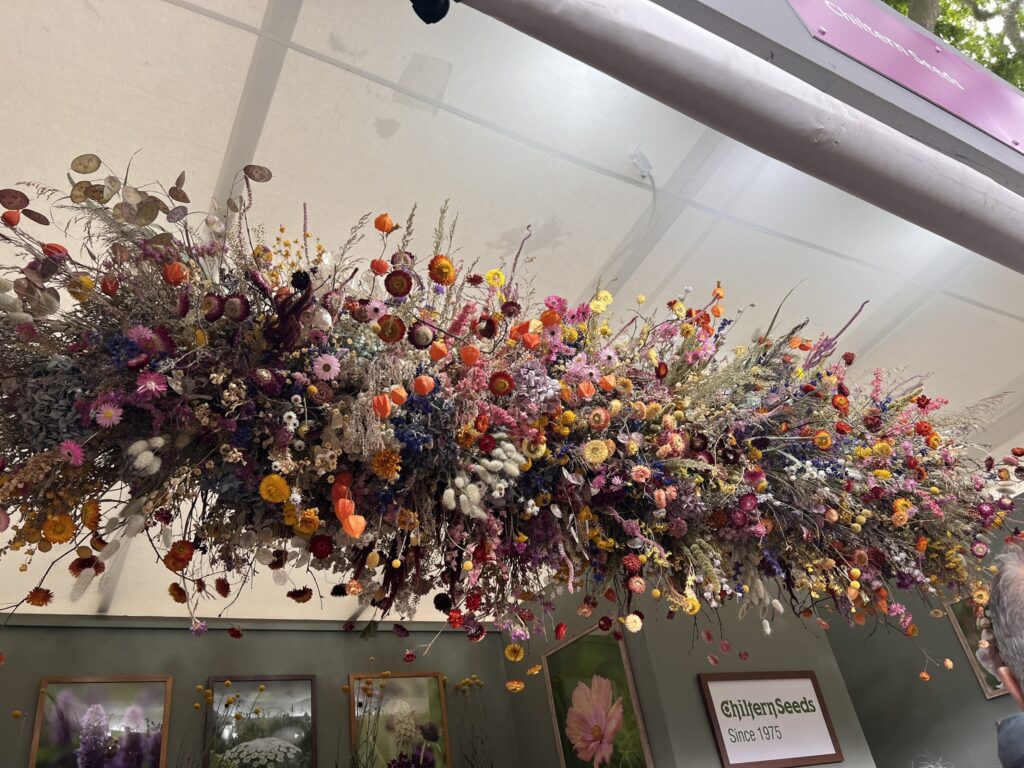
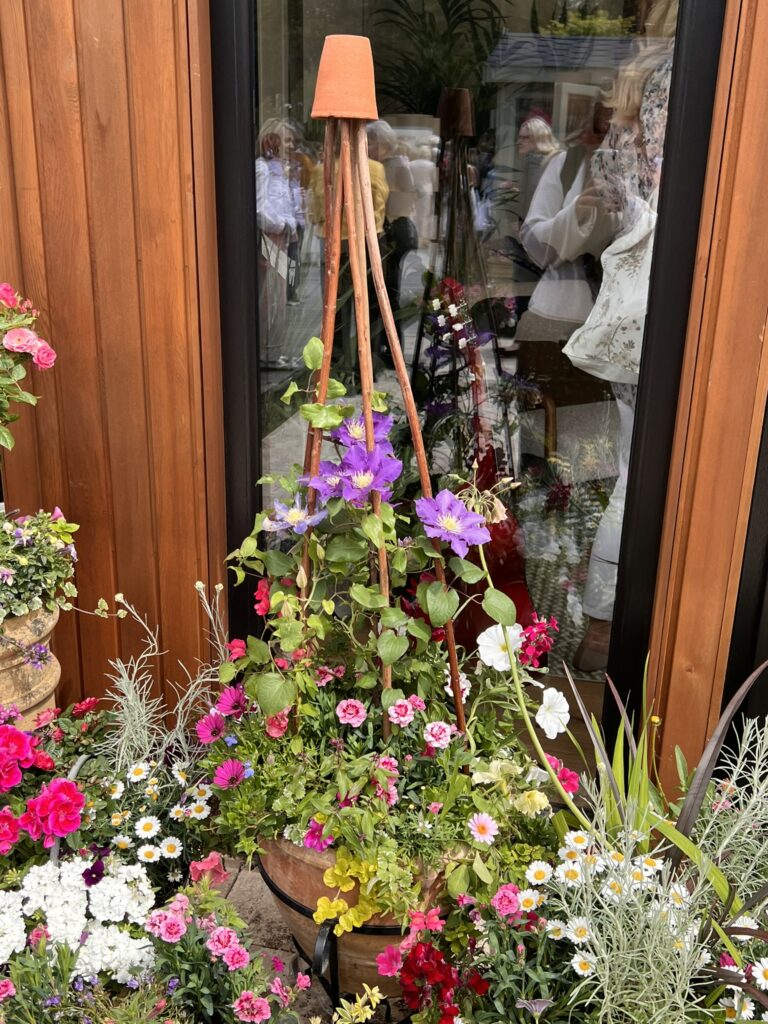
5. Gardens as open-air art galleries
I loved this part — little wonders made with natural materials. Rustic decorative elements like wooden rose-covered arches, picket fences, antique pots, birdhouses, or small rusty iron benches. Thoughtful sculptures and surprises tucked into the greenery — they spark curiosity and elevate the experience.

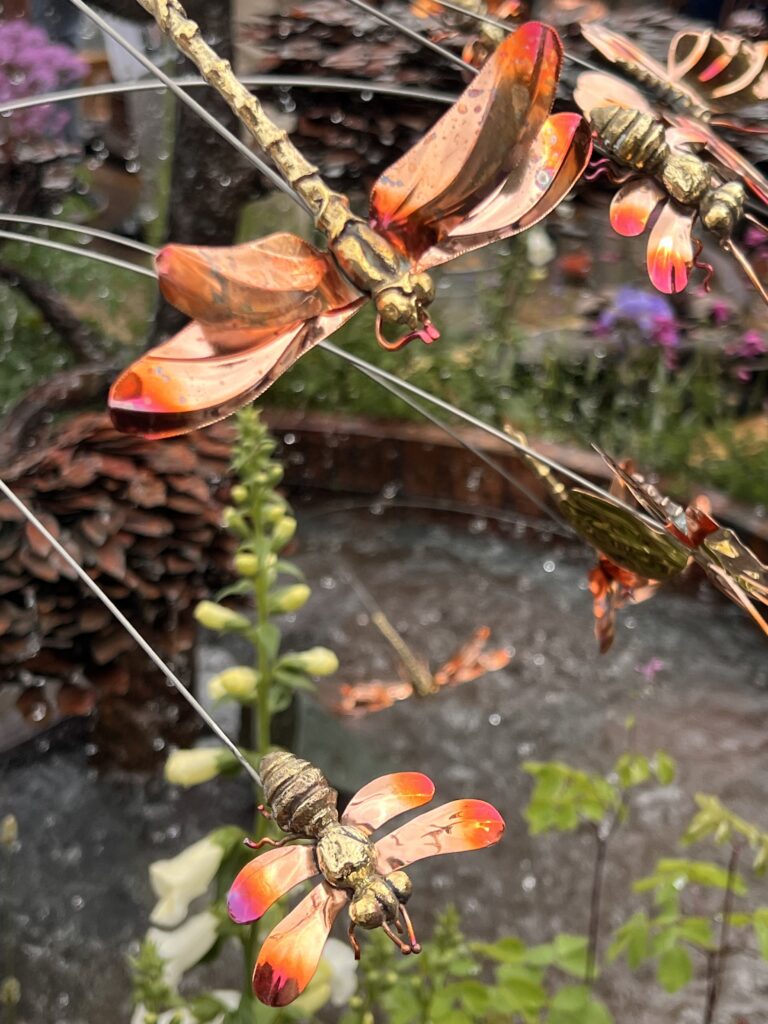
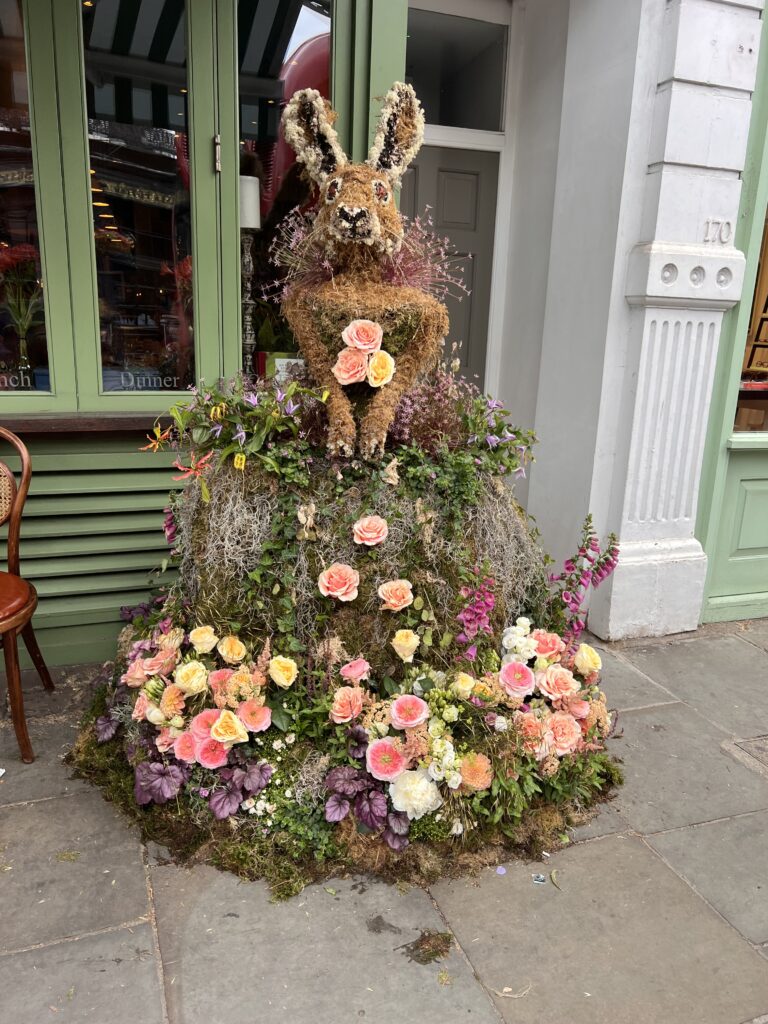
6. Sustainability is the standard
In the UK, sustainability is no longer a trend — it’s woven into everything: how people live, shop, design. Every project at Chelsea must now declare where its materials and plants will go after the show. Many award-winning gardens are relocated to hospitals, hospices, schools, and community spaces across the country. Materials and plants are reused to create long-term impact, promoting wellness, education, biodiversity, and social inclusion.
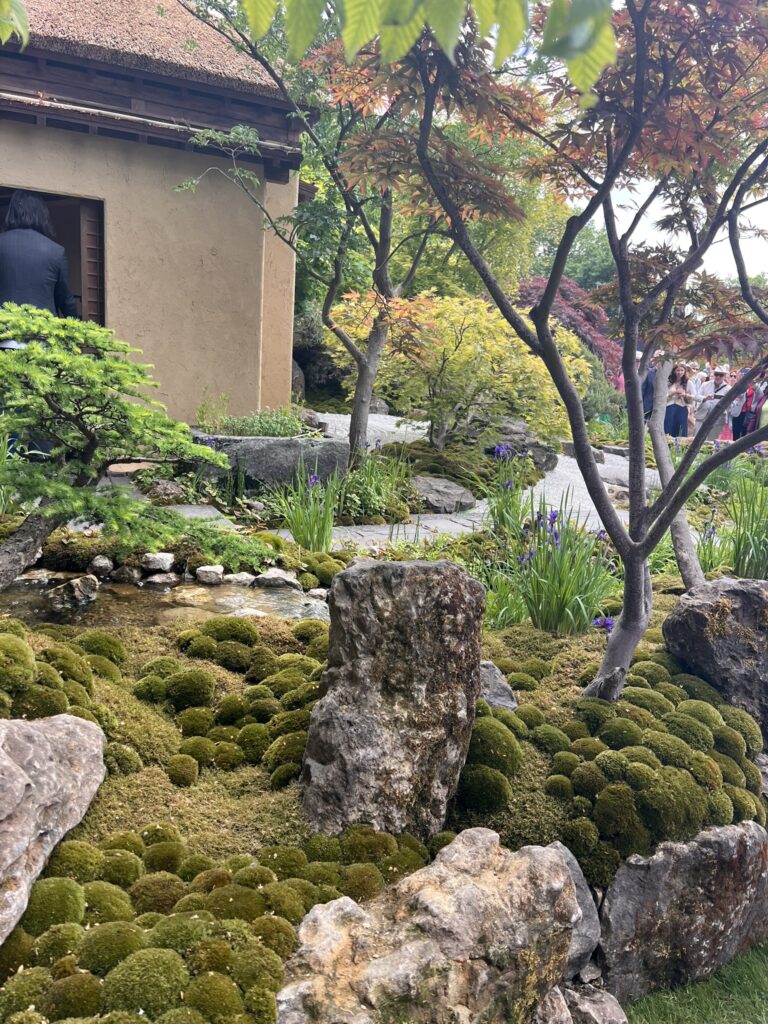
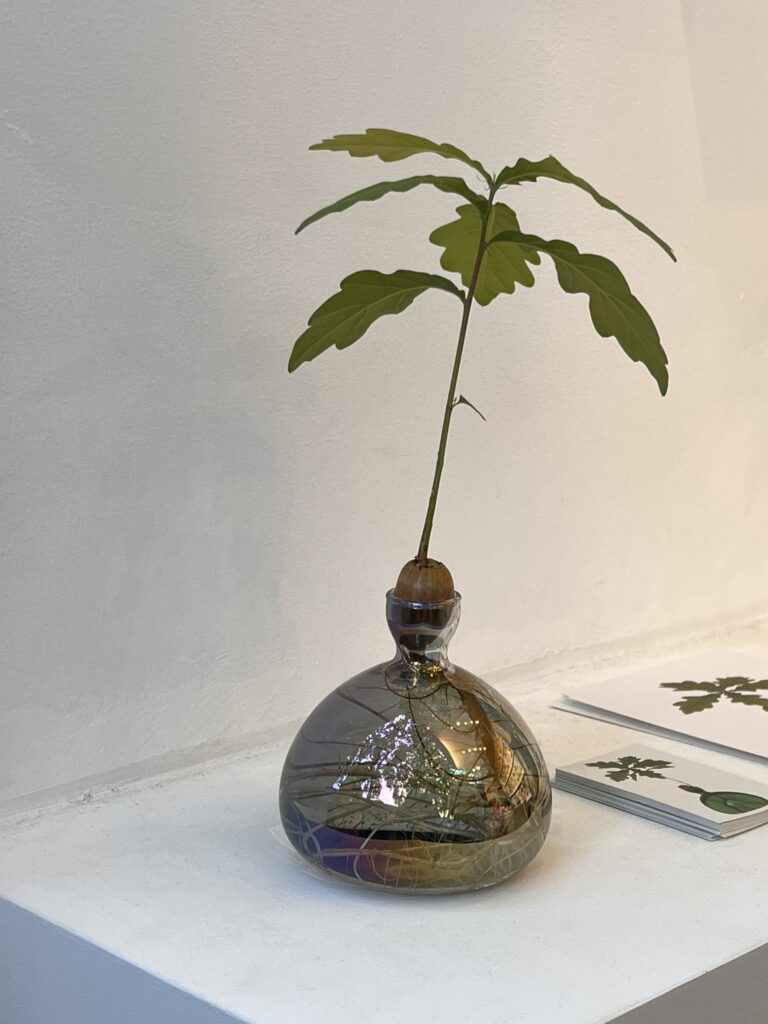
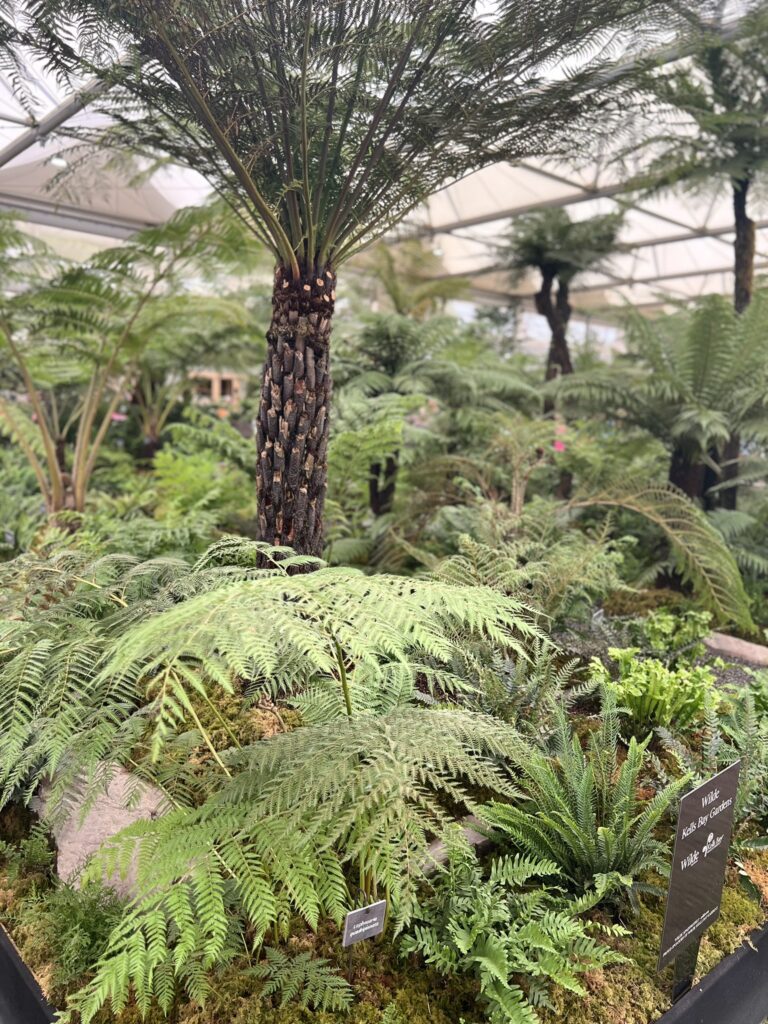
7. Eco-friendly funeral floristry
A new awareness is blooming in the realm of farewell floristry — eliminating plastic foam in favor of biodegradable arrangements using local flowers. We saw beautiful examples: wicker coffins, wreaths made from plants that could be replanted at home or on graves, continuing to bloom long after. These “celebration of life” funerals aim for more meaningful, personal goodbyes, with seasonal and sustainable floral elements. I find this idea incredibly moving — embracing the cycle of life and nature in such a poetic way.
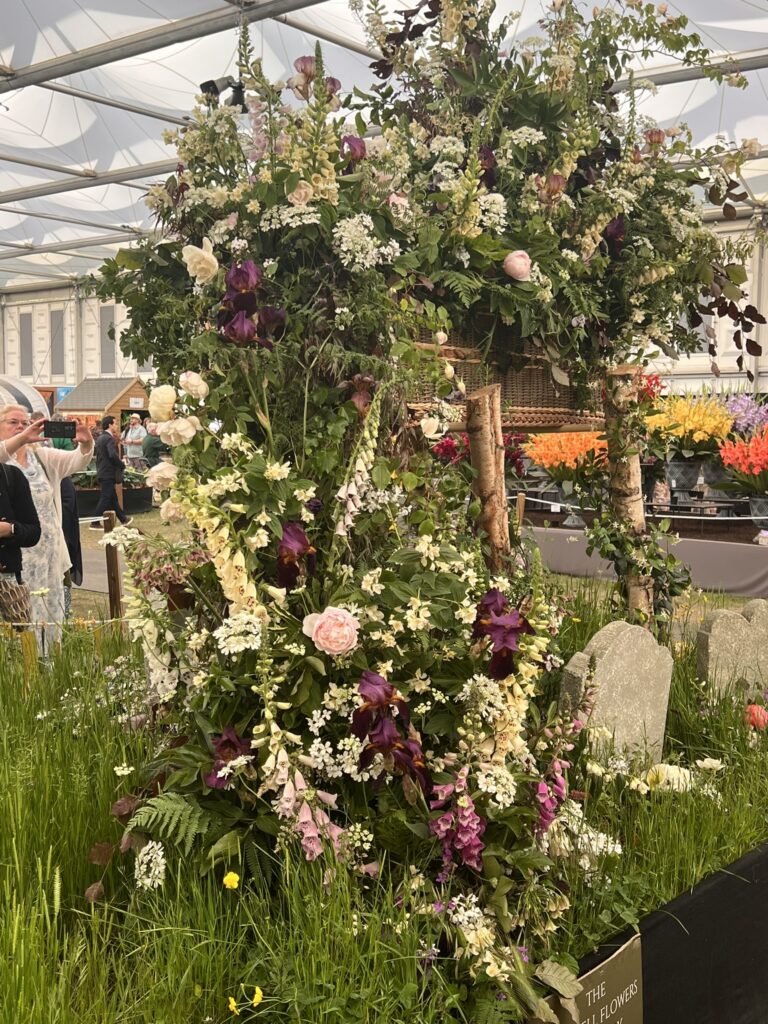
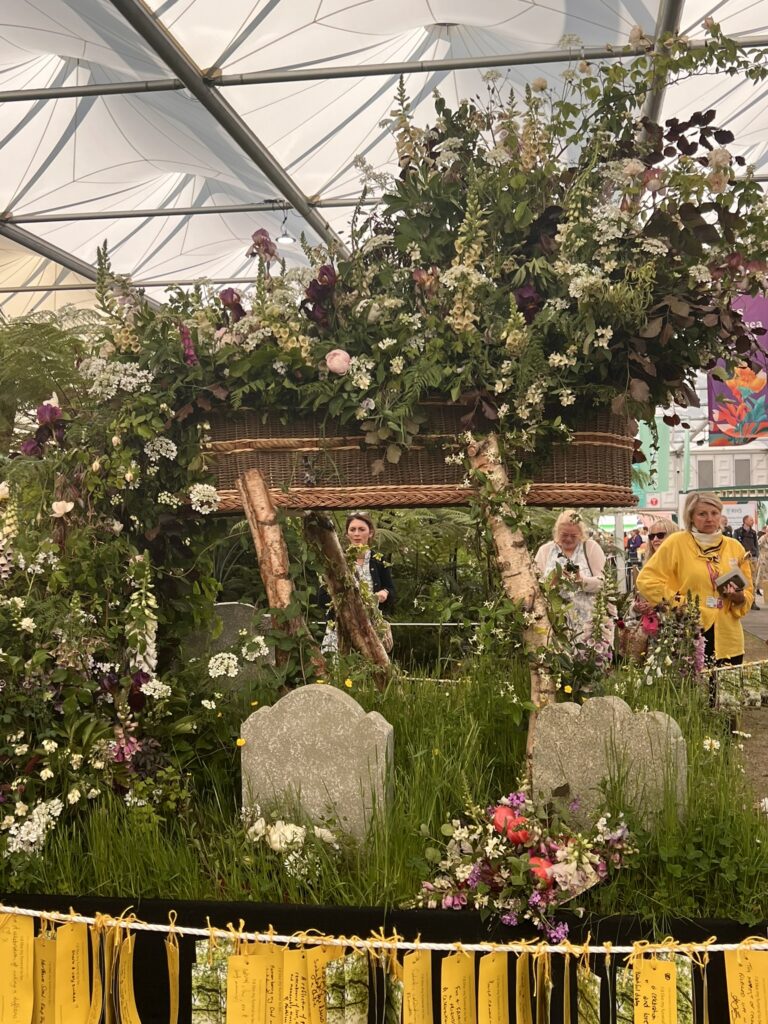
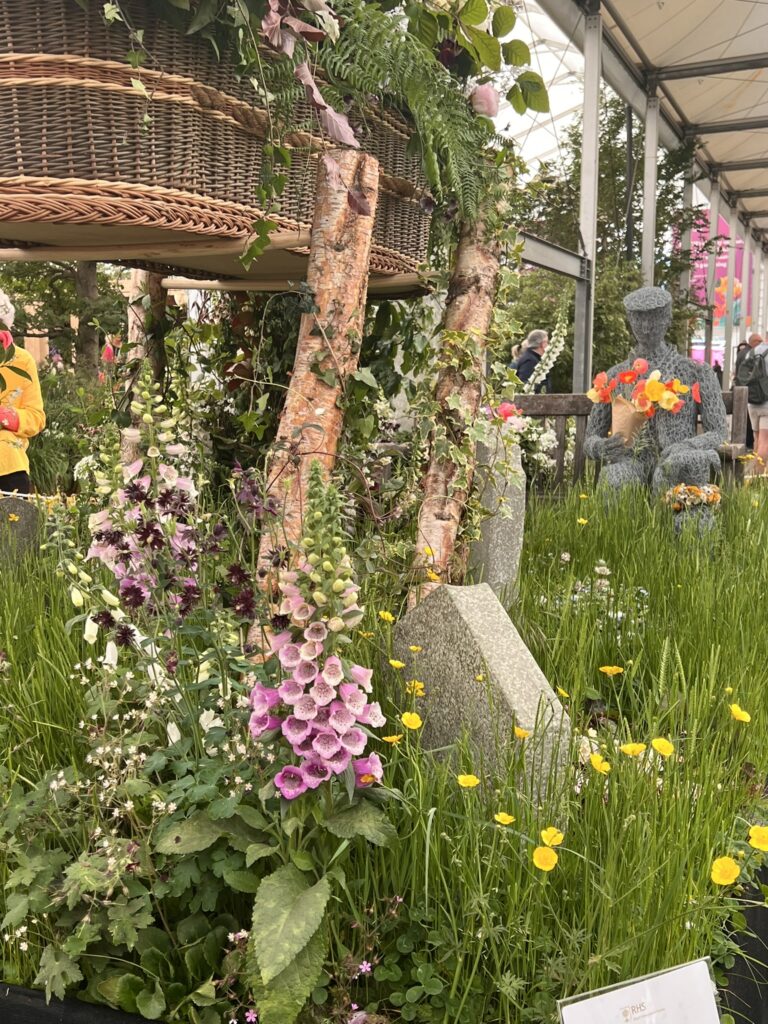
A garden that inspires and invites reflection
Visiting Chelsea in person was like opening a big window into all a garden can be: a creative space, an emotional refuge, a living lab.
And now, back at the farm, with my head full of ideas, shapes, and colors, it’s time to see how we can let a little bit of Chelsea bloom here too.



